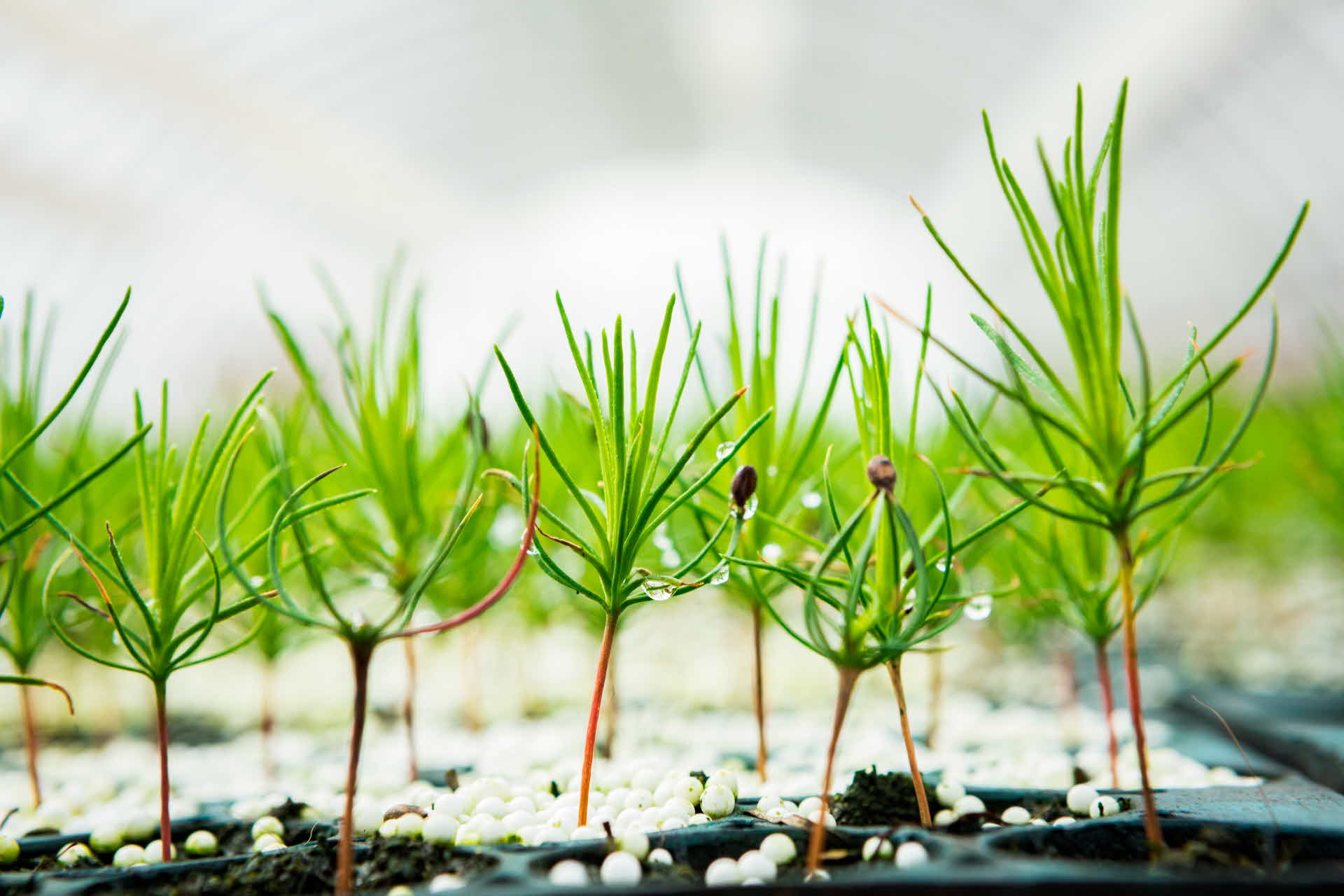
- MEDIA
- GRAZING DAMAGE
Overgrazing undermines climate benefits and the rural economy
- Article
Reducing grazing damage to newly planted forests can be of considerable benefit to the climate and the Swedish economy. Currently, overgrazing by ungulates, such as elk, reduces carbon dioxide absorption corresponding to almost a quarter of Sweden’s total emissions and reduces the added value of the country’s forests by SEK 11.9 billion. “Obviously animals eat plants, and you have to accept that to some extent, but the impacts are exceptionally high in Sweden at the moment,” says Jonas Mårtensson, President, SCA Forest.
In northern Sweden, it is mainly pine plants that are subject to grazing ungulates, primarily elk. In 2023, the Forestry Research Institute of Sweden said that Sweden had the most elk-populated forests in the world by some margin. According to the institute, Sweden has 263,000 elk distributed over 27.9 million hectares of forest land, corresponding to more than 9,400 elk per million hectares.
Finland, by comparison, is estimated to have 114,000 elk distributed over 26.2 million hectares of forest land, equivalent to 4,300 elk per million hectares of forest land.
“You can discuss exactly what number is desirable to reduce damage to forests, while at the same time providing a favourable environment for hunting. On the other hand, you have to be aware that Sweden’s high number of elk comes at a cost, and that cost hits hard in northern Sweden, where we plant a lot of pine and have a lot of elk,” explains Mårtensson.
A recent evaluation of Sweden’s elk management system found that grazing damage has significant impacts. In forestry planting, there is a tolerable target level in which five per cent of seedlings are damaged by grazing on an annual basis. Overall, this means that over the many years it takes for a seedling to grow into a tree, it is considered acceptable for 7 out of 10 seedlings to survive undamaged.
Overgrazing, i.e., the amount of damaged seedlings beyond the acceptable level, means that fewer seedlings become full-sized trees. This in turn results in a loss of forests’ ability to create climate benefits and the forestry industry’s ability to create economic activity in the countryside.
“Over time, there’s a major difference between staying within acceptable levels and serious grazing damage. For Sweden, it would be extremely valuable to use different methods, including hunting, to reduce grazing damage and achieve a better balance,” says Mårtensson.
The evaluation of Sweden’s elk management programme identified a number of challenges and impacts that can be addressed. For example, the number of road traffic accidents involving wild game has doubled since 2003. The figures show an increase in elk accidents during the first ten years of the programme before they stabilized at a relatively high level.
Furthermore, the climate benefit from forest growth is judged to be significantly impacted by grazing beyond defined acceptable levels. In the long term, overgrazing is estimated to correspond to an annual CO2 uptake of close to 12 million tonnes of carbon dioxide equivalents a year.
“This compares to Swedish passenger car traffic, which emits approximately 10 million tonnes a year, or almost a quarter of Sweden’s annual emissions. Forests’ growth and climate benefits are limited in their potential because too many seedlings are eaten,” Mårtensson says.
Overgrazing comes with a hefty financial cost, too. The total cost of damage caused by overgrazing is estimated at SEK 20.5 billion in lost value added, of which SEK 11.9 billion is estimated to be damage beyond acceptable levels.
“Basically, it’s perfectly fine if the grazing reduces value added by almost SEK 9 billion, but the actual amount is slightly more than double that every year and that is problematic. A lot of people are employed in Sweden’s forest sector and a couple of industries in rural counties are, literally, eaten up every year, so working on these issues is a good place to start,” Mårtensson explains.
How can grazing be reduced so that 7 out of 10 plants become trees?
“This isn’t about one specific measure, but it is important to look at local predator pressure on the elk species coupled with effective game management that strives to gradually reduce ungulate populations. Then we can reduce grazing and still offer good hunting opportunities,” Mårtensson says.
“We also believe that there’s more to do in terms of site adaptation – basically, how to plant, and how to collect data and report data on damage so that it becomes easier to work towards our goals.”

